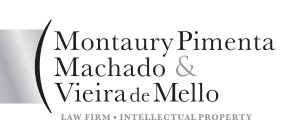Brazil is one step closer to recognizing and regulating the registration of Position Marks
Recently the INPI - National Institute of Industrial Property shared a Public Consultation on the examination of applications for registration of Position Marks (Public Consultation 01/2021), enabling the expression of interested parties in the subject.
Over the last 5 years, the Brazilian Patent Office has been adopting measures to reduce the backlog in patent examination combined with several improvements in its examination guidelines to perform a high-quality technical examination. In addition, the pandemic scenario has brought other sensitive discussions regarding the Brazilian patent system and its impact on public health issues. This article aims at providing an overview of six topics that directly affects Life Sciences patents in Brazil.
The wording proposed by the main Intellectual Property associations in Latin America would be as follows: "The distinctive set formed by the application of a sign in a specific position on given support, capable of distinguishing products or services, will be registered as a POSITION MARK, to be able to distinguish itself from other identical, similar or alike products or services.”
That is, a certain element inserted in a certain position on a product could have the necessary characteristics of a distinctive sign and this set starts to be recognized by consumers; as an example, we could cite the red sole of Louboutin shoes, the red label on the back pocket of Levi's pants or the blue label on the part of the heel of Ked's sneakers, among others.
It is important to note that not all elements in a specific position have the required characteristics to be considered position marks. The whole set (mark and position) must detain enough distinctiveness, continuous and/or intense use, and cannot be functional.
Many take advantage of marks registered as design marks, which, by definition, are those that protect only a design or a symbol to identify a certain product or service to the consumer; and the judiciary has been enforcing the trademark rights of their holders as if they were position marks, since the Brazilian Industrial Property Law, Article 122, provides that “Any visually perceptive distinctive sign, when not prohibited under law, is susceptible of registration as a mark” and, in this sense, except in a better judgment, there is no legal prohibition for the registration of position marks, therefore, its regulation by the INPI is of major importance.
However, even though some marks which could be considered position marks are being granted registration by the INPI, the lack of specific regulation for position marks unnecessarily lengthens several discussions in the judiciary, which in several situations, has already been supporting marks against violators of position marks.
On the other hand, many marks which could be considered as position marks were not granted registration by the INPI for lack of regulation and, in these cases, the consequences can be serious, as third parties in bad faith can take advantage of them under the argument that the INPI itself would have denied registration for them. In other words, the lack of such regulation leads to unnecessary legal uncertainty for the position mark holders.
To avoid such wear and financial loss for those legitimately interested in this protection, it is extremely important to improve the trademark system, following the global trend. Recently Dr. Martens, a well-known European boot brand, won a dispute in European courts over the infringement of its position mark - yellow stitching around the boot.
Fortunately, the carried-out Public Consultation has the objective of hearing the opinion of specialists and of those interested in the subject, so that clear rules can be created to officially regulate the matter in Brazil, thus modernizing the Brazilian trademark system.
However, an important question remains: is it possible to regulate the registration of position marks in their exhaustion without at the same time regulating the institute of "secondary meaning" (acquired distinctiveness)?
The "secondary meaning" occurs when an initially generic or common-use denomination or sign acquires distinctiveness due to the continued and intense use for a certain product or service - some examples would be "American Airlines", "Banco do Brasil" or "Casa do Pão de Queijo" – becoming immediately identified by the consumer.
Since the distinctiveness required for position marks can be intrinsically associated with its continued use in that specific position and of the limitations of finding countless possibilities for the positioning of a given mark, in most cases it acquires the characteristics of "secondary meaning" and, for this reason, we understand that the ideal would be for these matters to be dealt with jointly.
Bearing in mind the importance of the subject in the legal field and to foster business, it will be the object of debates at the 41st Intellectual Property Congress hosted by ABPI (Brazilian Association of Intellectual property). The regulation of Position Marks will be debated on August 26, at 9:00 am, by Dr. André Balloussier, INPI Marks Director, Dr. Lori Meddings, legal representative of Bobcat, Dr. Xavier Ragot, legal representative of Christian Louboutin, by lawyer Joana Siqueira, partner at Montaury Pimenta, Machado & Vieira de Mello, and by lawyer Fernanda Magalhães, partner at Kasznar Leonardos.
With the end of the term of the public consultation, we hope that in a short time we will have another effective means of protecting the mark in Brazil.





